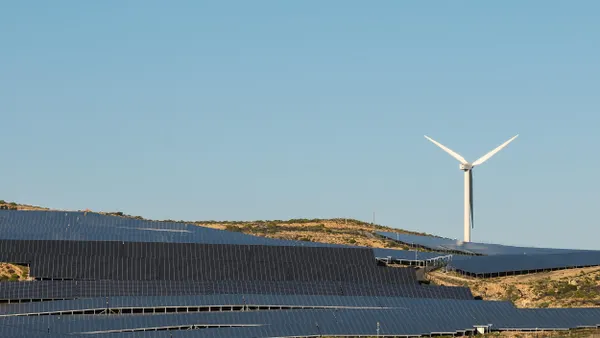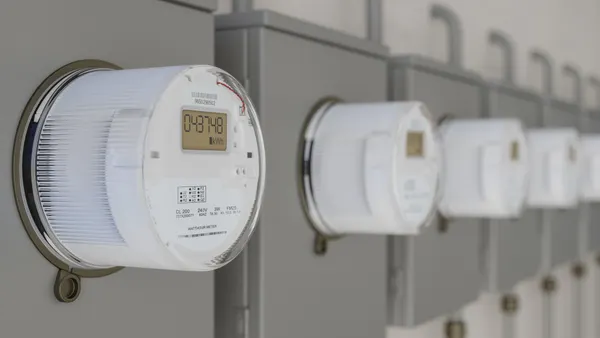The following is a contributed article by Alison Silverstein, consultant and former Texas Public Utility Commission and Federal Energy Regulatory Commission staffer.
In February 2021, Arctic temperatures caused electricity demand in Texas to spike to unprecedented levels at the same time that 48% of the Electric Reliability Council of Texas' (ERCOT) generation capacity dropped out of service due to frozen equipment or fuel supply failures. This forced ERCOT, the grid coordinator serving 90% of Texas, to cut electricity service to almost 70% of customers for up to four days, at great economic costs, human suffering and lives lost.
The Texas Legislature and Public Utility Commission have ordered or are implementing recommendations on issues including better public communication, power plant weatherization, natural gas cost recovery, and an energy price circuit breaker, but much more work needs to be done. Texas' Governor has just directed the Commission to take more action to protect dispatchable generation and add transmission. But with summer heat on the way and unprecedented heat waves across the nation, it's time for Texas to shore up grid reliability by aggressively managing electricity demand, not just throwing money at supply-side measures.
Looking back
Since Winter Storm Uri in February, ERCOT has called for conservation twice more, warning that without lower electricity consumption we would need controlled outages. On April 13, emergency conditions were expected because customer loads rose under unexpected heat while 32,000 MW of ERCOT's capacity was offline for planned maintenance. From June 14-19, over 12,000 MW of generation (mostly gas-fired and nuclear plants, three times ERCOT's extreme expected outage scenario) went out for repairs or maintenance under normal hot weather conditions. In all three conservation events, ERCOT cited higher than expected demand and atypically high generation outages.
Texas' political institutions rushed to respond. The Legislature passed two statutes that the Governor signed in June, announcing that, "Everything that needed to be done was done to fix the power grid in Texas," and, "The energy grid in Texas is better than it has ever been."
The new statutes included requirements for power plant winterization, bans on most retail real-time pricing rate options, restructured the ERCOT Board and Public Utility Commission, and authorized securitization (collected through energy rates) to stabilize electric and gas utilities' financial losses from the February event and power plant weatherization. They directed regulators to address a number of key issues.
The June call for voluntary electricity conservation came six days after the new ERCOT "remedy" bills were signed, and months before the onset of real Texas summer heat.
All these ERCOT events have common root causes, starting with Texas politicians' deep aversion to regulating business or investing in prevention and insurance, particularly on behalf of the state's most vulnerable citizens. Other common root causes include ERCOT's market rules, the relentless growth of electricity demand, the reality that every type of generation — natural gas, coal, nuclear and wind — has failed to perform at high, dependable levels when Texans need it most, and that ERCOT has consistently failed to imagine and forecast bad outcomes such as simultaneous extreme demand with low generation availability.
Looking ahead
The electricity shortfalls in February and June cause many Texans and national commentators to fear that ERCOT and the generators will fail during predictable summer peak weather, or in a heat wave with temperatures well above normal. Future calls for voluntary conservation to protect the grid may not yield much relief; many Texans have vented on Twitter and in the press about their diminished confidence in ERCOT and their unwillingness to adjust their thermostats for the common good.
In a report, "Never Again: How to Prevent Another Major Texas Energy Failure," issued after the close of Texas' 2021 legislative session, five former Texas PUC commissioners and I analyzed many of the problems that caused the February winter outages. We offered 20 policy recommendations that represent tangible, practical solutions to improve Texas' energy policy and operational infrastructure without destroying the fundamental principles of ERCOT's energy-only market and retail competition. All but one of these 20 recommendations (winterization of the gas supply chain) apply as much to ERCOT's generation shortfall and demand surprises in June as they do to the February outages.
Reliable grid operation requires balancing supply and demand. Although the Governor and Legislature have focused on fixing ERCOT's electricity supply, we must use energy efficiency, demand response and storage to cost-effectively manage Texas' appetite for electricity and reduce the likelihood and consequences of supply-side failures.
Fix ERCOT electricity demand, ASAP
Texas' population grew 16% from 2010-2020; ERCOT's peak demand has grown by 13% and electricity use by 20% between 2011 and 2021. ERCOT's electricity demand is highly weather-sensitive, and summer and winter peaks are driven by residential customer demand. Sixty percent of Texas homes have electric heat – often inefficient resistance heating – and little building shell insulation, so very cold weather drives a demand spike of as much as 44% of winter peak. And in high summer temperatures, half of ERCOT load is used for air conditioning.
Given the growing numbers and severity of extreme weather events across the nation and world, building from a base of higher mean temperatures, we must expect and plan for more bad weather events and much higher levels of electricity demand (unless grid equipment fails before demand peaks).
We cannot build enough transmission, generation and battery storage fast enough to solve this challenge with supply solutions alone. Texas cannot keep the lights on in the years ahead unless we permanently reduce demand levels and energy usage in both summer and winter.
If we use energy efficiency and demand response to lower and manage demand, it will improve grid reliability and reduce risk by lessening the amount of fast-ramping generation and demand response needed to manage wind drops and evening PV ramp-down. It will make it easier to operate a grid with higher shares of wind and solar generation relative to dispatchable, fast-ramping gas plants, and slow the amount of new transmission and distribution we must add. Managing demand better will also give ERCOT time to figure out how to build, incent and manage a diverse, evolving fleet of electricity generation and storage with a healthy reserve margin of supply relative to demand.
Cost-superior demand-side options
We can design and implement energy efficiency and demand response measures to target and reduce heating and cooling loads at costs far below the Texas PUC's $80/kW avoided cost of capacity and $0.1136/kWh avoided cost of energy. In 2019 the Texas electric utility energy efficiency programs, including commercial and industrial demand response measure impacts funded through utility programs, reduced total customer electric demand by 480 MW at a lifetime savings cost of $16.94/kW and saved 651,950 MWh at a lifetime savings cost of $0.01/kWh, with a collective cost-effectiveness ratio of 2.7, according to analysis prepared for the PUCT by Tetra Tech for the 2019 statewide energy efficiency portfolio report.
Home weatherization (including air sealing and attic insulation) can reduce heating demand by 11-14% and cut air conditioning costs while improving residents' safety and health. In 2018 the nine Texas investor-owned utilities used $22.7 million of utility ratepayer funds to weatherize 20,827 households, according to a report by the Texas Department of Housing and Community Affairs. The Houston Advanced Research Council estimates that we could weatherize 250,000 Texas homes for $802 million per year, in each year saving 672 MW and 1,133 GWh while reducing customer electric bills by $159 million, according to Gavin Dillingham, HARC's director for clean energy policy.
We can and must do better. Texas can use strategically designed energy efficiency measures (weatherization, air conditioner and heater replacement programs) and demand response (HVAC and other equipment controls, building energy management systems, managed battery and electric vehicle charging) to reduce electricity uses that occur during peak and grid stress hours.
A 2017 study for the U.S. Department of Energy estimated that Texas is capturing less than 10% of the cost-effective energy efficiency available – which means that we could increase our efficiency efforts by 90% and still save money. The American Council for an Energy Efficient Economy finds that MW saved from energy efficiency are competitive with or less expensive than any current supply-side technology (see figure).
Relative levelized costs of electric capacity
Although Texas would have to scale up its energy efficiency and demand response-building efforts many-fold, there is extensive guidance on best practices for saving energy in a hurry through energy efficiency programs. New energy efficiency funding would have to come from electricity rates and taxpayer funds and lending bank initiatives — but so too would charges for such proposed changes as a new electric capacity market or a "generation capacity reserve." And unlike new power plants, energy efficiency investments will save Texans money as they strengthen grid reliability and improve citizens' comfort and health every single day.
Texas legislators and regulators should not shy away from prescribing minimum standards and requirements for energy efficiency, demand response, and more – the security of Texas' economy and Texans' well-being depend on it.













